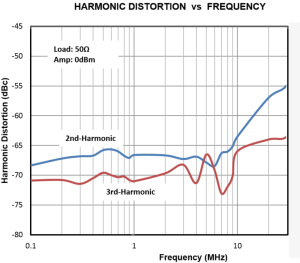Review: The Siglent SDG1032x Arbitrary Function Generator

The use of EasyPulse technology for pulse generation ensures that very low jitter occurs on the signal edges. DDS generators tend to produce jitter on the output waveform when the sampling rate is not an integer multiple of the output frequency. According to the spec the unit can produce square waves up to 30 MHz with jitter less than 300 ps+0.05 ppm of period. As far as I can tell by observing the output signal the technique is very effective.
The built-in frequency counter goes up to 200 MHz and is a nice addition – admittedly I haven’t had the chance to use this function yet.
The number of available waveforms is pretty awesome. In addition to the standard waveforms, the function generator offers 196 preprogrammed waveforms divided into groups. The choice is so great that you would rarely need to use the Windows EasyWave software to create a signal shape.
On the bench and to sum up

I was able to measure a much lower figure at 1 kHz.
The square and pulse signals showed some overshoot at first, which turned out to be the result of incorrect BNC cable termination. Once this was corrected, the square-wave signals (rise time approx. 4.5 ns) looked perfect. Pulses can be produced and you can define their rise and fall times.
In truth, for my purposes, the Siglent model SDG830 provides me with just about all I need, but the SDG1032X offers so many extras that I think it’s worth the expense. The harmonic setting in particular is extremely useful and invites you to experiment with distortion. The burst signal setup is also super easy — not to mention the second (synchronizable) independent generator output which is very practical.

I've been using the SDG1032X a lot since it arrived and am very pleased with it. It's a good, well built, piece of test equipment and well worth the money; especially as Siglent are offering a hefty discount on the list price at the moment.
Read full article
Hide full article



Discussion (0 comments)